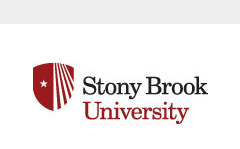Document Type
Full Paper
Location
Charles B. Wang Center
Event Website
http://www.centerfornewsliteracy.org/globalconference2017/
Keywords
news literacy, journalism, media, news, IMVAIN, attribution, source verification, independence, accountability, anonymous sources, democracy, freedom of the press, social media, verification, echo chamber
Start Date
8-15-2017 9:00 AM
End Date
8-15-2017 10:30 AM
Description
India might be the world’s largest democracy, but it is still fraught with challenges that plague the underdeveloped world. India is quickly moving to a digital democracy—the ability to receive information in almost real time through mass media and to make one’s voice heard through social media (1) --with complex consequences. One of them has to do with a post-fact environment and non-state actors who try to influence public opinion to serve their own ends. Social media, especially WhatsApp, serves their purposes well, for instead of exposing people to diverse views, it mainly creates an echo chamber (2). Making matters worse, the employment of trolls by political parties to dish out their point of view and even disinformation has become popular in the last couple of years. It thus becomes imperative to ensure that citizens are taught to differentiate between a rumour and verified information/news. In normal circumstances, not all stories are attributed clearly. This is especially the case with stories that lend perspective, or are dealing with issues that might be controversial. Journalists in India have for long learnt to hide their sources behind nomenclatures—an official who belongs to the ruling party, a veteran journalist who covers the BJP (3), etc. Be that as it may, when there is no attribution, there is also little verification. Information taken from one source that is probably considered well-connected, reliable and authoritative is rarely corroborated with other sources, or even documents. Again, this could be a cultural issue, or simply a lack of initiative. News Literacy works with several tools to teach people what news really is and what they out to get in their news, as well as identify what might be propaganda passing off as news. Emphasis is laid on attribution and verification. This essay attempts to examine the Indian situation where it is increasingly difficult to sift the grain from the chaff simply because journalists do not attribute or provide verification to the reader. News literacy advocates have to make do with cultural references or tread a very tricky path. (1) Jaishankar, Dhruva (2016 June 29) Brexit: The first major cacualty of digital democracy, https://www.brookings.edu/blog/orderfrom-chaos/2016/06/29/brexit-the-first-major-casualty-of-digital-democracy/ (2) Dixit, Pranav (2017, January 19) Viral WhatsApp Hoaxes Are India’s Own Fake News Crisis, https://www.buzzfeed.com/pranavdixit/viral-whatsapp-hoaxes-are-indias-own-fake-news-crisis?utm_term=.ba2BenAVr#.cjNyVb0LR (3) Mohan, Rohini (2016 November 1) Role of a Lifetime: Smriti Irani’s rise from soap star to union minister, http://www.caravanmagazine.in/reportage/role-of-a-lifetime-smriti-irani
Says Who? Challenges of Teaching News Literacy in a Culture of Secrecy
Charles B. Wang Center
India might be the world’s largest democracy, but it is still fraught with challenges that plague the underdeveloped world. India is quickly moving to a digital democracy—the ability to receive information in almost real time through mass media and to make one’s voice heard through social media (1) --with complex consequences. One of them has to do with a post-fact environment and non-state actors who try to influence public opinion to serve their own ends. Social media, especially WhatsApp, serves their purposes well, for instead of exposing people to diverse views, it mainly creates an echo chamber (2). Making matters worse, the employment of trolls by political parties to dish out their point of view and even disinformation has become popular in the last couple of years. It thus becomes imperative to ensure that citizens are taught to differentiate between a rumour and verified information/news. In normal circumstances, not all stories are attributed clearly. This is especially the case with stories that lend perspective, or are dealing with issues that might be controversial. Journalists in India have for long learnt to hide their sources behind nomenclatures—an official who belongs to the ruling party, a veteran journalist who covers the BJP (3), etc. Be that as it may, when there is no attribution, there is also little verification. Information taken from one source that is probably considered well-connected, reliable and authoritative is rarely corroborated with other sources, or even documents. Again, this could be a cultural issue, or simply a lack of initiative. News Literacy works with several tools to teach people what news really is and what they out to get in their news, as well as identify what might be propaganda passing off as news. Emphasis is laid on attribution and verification. This essay attempts to examine the Indian situation where it is increasingly difficult to sift the grain from the chaff simply because journalists do not attribute or provide verification to the reader. News literacy advocates have to make do with cultural references or tread a very tricky path. (1) Jaishankar, Dhruva (2016 June 29) Brexit: The first major cacualty of digital democracy, https://www.brookings.edu/blog/orderfrom-chaos/2016/06/29/brexit-the-first-major-casualty-of-digital-democracy/ (2) Dixit, Pranav (2017, January 19) Viral WhatsApp Hoaxes Are India’s Own Fake News Crisis, https://www.buzzfeed.com/pranavdixit/viral-whatsapp-hoaxes-are-indias-own-fake-news-crisis?utm_term=.ba2BenAVr#.cjNyVb0LR (3) Mohan, Rohini (2016 November 1) Role of a Lifetime: Smriti Irani’s rise from soap star to union minister, http://www.caravanmagazine.in/reportage/role-of-a-lifetime-smriti-irani
https://commons.library.stonybrook.edu/cnlglobalconference/cnl2017/one/13


